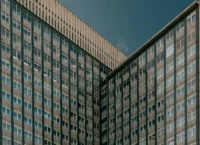- Home
- Articles
- Architectural Portfolio
- Architectral Presentation
- Inspirational Stories
- Architecture News
- Visualization
- BIM Industry
- Facade Design
- Parametric Design
- Career
- Landscape Architecture
- Construction
- Artificial Intelligence
- Sketching
- Design Softwares
- Diagrams
- Writing
- Architectural Tips
- Sustainability
- Courses
- Concept
- Technology
- History & Heritage
- Future of Architecture
- Guides & How-To
- Art & Culture
- Projects
- Interior Design
- Competitions
- Jobs
- Store
- Tools
- More
- Home
- Articles
- Architectural Portfolio
- Architectral Presentation
- Inspirational Stories
- Architecture News
- Visualization
- BIM Industry
- Facade Design
- Parametric Design
- Career
- Landscape Architecture
- Construction
- Artificial Intelligence
- Sketching
- Design Softwares
- Diagrams
- Writing
- Architectural Tips
- Sustainability
- Courses
- Concept
- Technology
- History & Heritage
- Future of Architecture
- Guides & How-To
- Art & Culture
- Projects
- Interior Design
- Competitions
- Jobs
- Store
- Tools
- More

How can spatial practice facilitate a new speculation on the impact of artificial reproduction on gender binaries?
In Vitro proposes an artificial alternative to reproduction through spatial practice. The reproductive journey unfolds through a speculative narrative that enters the science fiction realm. Through a social commentary, the implications of advanced reproductive science and technology are deliberated to evoke a dialogue that concerns the direction and outcomes of uprising biotechnologies.

The concept stems from an intersect of feminist and ecological theory, fiction and criticism to investigate male/female, production/reproduction and human/non-human binaries. Research has been drawn from evolving reproductive science to propose two speculative mechanisms — an Artificial sex cell generator and Artificial womb. The proposition utilises the existing architecture of abandoned Mount Morgan Mine QLD in constructing a non-binary reproductive program to deliver human offspring.
This research proposal predicts a world that is perhaps a few years away from today. What will happen when the artificial sex cell and womb arrives?

These biotechnologies enable same sex couples, singles and infertile parent’s reproductive possibilities. The DNA of a human can be transformed into an artificial sex cell and then fertilised, birthed from an artificial womb. This technology could rewrite heteronormative values by creating new radical definitions of a parent and family.

The proposal directly asks us to question who benefits from these reproductive technologies. Will artificial wombs liberate some and alienate others? Will these artificially produced children be viewed differently to society? Will this technology create an equal distribution of reproductive labours? Who is developing this technology? In Vitro also seeks to evoke a discussion concerning the threats of the technology, such as – body parts, cloning, trafficking, experimental studies, DNA and fetus theft.

Artificial wombs provide a potential solution for women with uterine abnormalities and women who are naturally unable to conceive. The technology could also reduce the implications with pregnancy as it could eliminate pregnancy risks for women’s health and prevent the lives of premature babies. This however, sparks discourse concerning artificial abortion.

Artificial reproduction brings both positives and negatives, and more questions the answers. Regardless of which side of the argument we take, one thing remains clear: as the technology is getting closer and closer to becoming a reality we need to ask ourselves these questions.
illustrarch is your daily dose of architecture. Leading community designed for all lovers of illustration and #drawing.
Submit your architectural projects
Follow these steps for submission your project. Submission FormLatest Posts
Renaatus Irumathi
Nestled on the eastern shores of Hulhumale’, Renaatus Irumathi Residence greets each...
White Khamovniki
The project is based on the idea of a building as a...
Millennium Horizon
The future cityscape Millennium Horizon is a groundbreaking architectural project envisioned for...
Wuto Space
A two-bedroom, one-living room apartment in the bustling heart of “Magic City”...

























Leave a comment